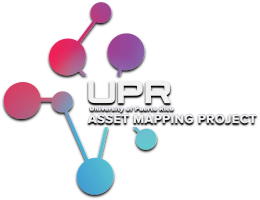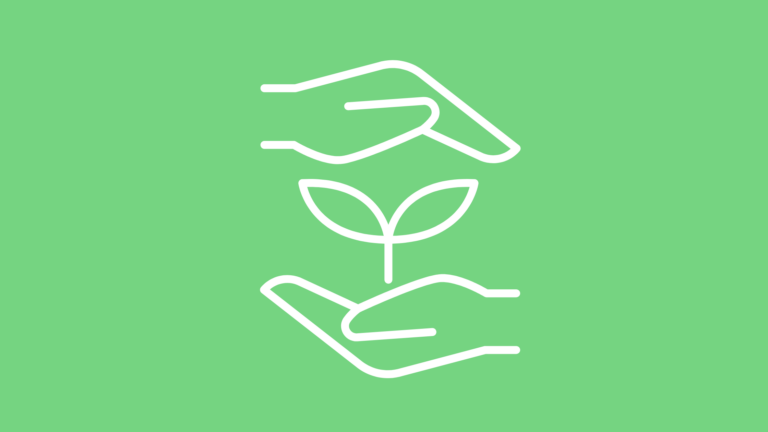UPR Resilience Assets: Strengthening Puerto Rico’s Disaster Response and Recovery
About the Map
Have you ever wanted to connect with a specific subject matter expert resource, specialized equipment, research or community outreach project in the UPR System? Have you found it difficult to do se? Would you like to have visibility of these assets in an easy and accessible way? The UPR Assets Mapping Project, funded by the U.S. Economic Development Administration (EDA), has the mission of compiling information about the countless assets of the UPR System to make them more visible and accessible to the university community and the general public.
Through the 11 campuses and units of the UPR System we can find a great diversity of assets in multiple disciplines that contribute to the economic and social development of Puerto Rico and the region. These assets form and are created by the faculty, staff and students of our University. Through the UPR Assets Map, the knowledge generated at the UPR will be more visible and we will have a better opportunity to highlight the immense value that our University adds to Puerto Rico, the region and the world.
Resiliency Data Layer
The UPR Asset Map aims to efficiently insert the UPR System into the disaster recovery efforts underway in Puerto Rico in the wake of Hurricanes Irma and Maria. If we know what we have, where it is and who we need to talk to in order to access the asset, we increase the probability of responding quickly and effectively to any situation, preparedness, response, mitigation of emergency events. This is why we started the Request for Information (RFI) exercise with the resilience-related data layer.
We know that the UPR System has contributed immensely to the recovery of Puerto Rico and the region through its research on coastal erosion processes, community advocacy support, technological applications for disaster response, resilient infrastructure design, public health impact analysis, the role of the arts in mental health and recovery, among many other efforts. The UPR Asset Map project seeks to make visible, connect and coordinate efforts between the UPR System, community, government and federal organizations to ensure informed and efficient responses to meet the needs of our communities and institutions after a disaster.
Let’s talk about assets
When we talk about assets of the University of Puerto Rico we are referring to everything that adds value to the UPR System, Puerto Rico, the Caribbean and the world. These assets can be categorized as:
– Technological innovation projects
– Research
– Certifications or academic courses
– Student organizations or associations
– Expertise
– Resilient infrastructure
– Awards or recognitions
– Institutes or Centers within the UPR System
– Theses, dissertations or degree projects
– Collaboration agreements
– Community support initiatives, and more.
The visibility of these assets will allow the university community and Puerto Rico to have greater access and benefit even more from these resources. Likewise, it will be possible to generate connections that did not exist before and initiatives that promote resilience, link efforts and open the way to new opportunities for our University and for Puerto Rico.
Topics and disciplines that contribute to resilience.
The UPR System contributes to disaster preparedness and recovery in Puerto Rico as the main center for research and community outreach in our country. Currently, the UPR has generated, and continues to generate, many related efforts from all its disciplines, faculties and departments. The four main topics we will be addressing in this first “RFI” are: resilience, climate change adaptation, disaster preparedness and recovery, and sustainable development. The arts and humanities, social sciences, communications, natural sciences, agriculture, business administration, “STEM” among many others, all contribute and generate knowledge on these topics, and we want to give them visibility.
Let’s see some examples:
UPR Cayey
Hurricane María Archive: Building collective memory with participatory methods.
Center for Multidisciplinary Research, Category: Resilience; Asset Type: Research
The Hurricane María Archive collaborates with the community of Jájome Bajo, Cayey, to: 1) facilitate the documentation of oral histories in Jájome Bajo in video and audio format and collect photographs of the disaster, 2) archive these materials on a platform accessible to the public, and 3) develop participatory methods for the creation of digital archives that chronicle the needs confronted, while promoting the creation and preservation of knowledge related to the atmospheric event.
UPR Cayey also developed an emergency response resiliency center for future climatological disasters.
UPR Humacao
When Nobody Came to Help Me: Protective Factors for College Students During Disasters in Puerto Rico
Center for Sustained Dialogue, Category: Resilience; Asset Type: Research
A study in the immediate aftermath of the hurricanes revealed that more than 60% of college students had confronted material losses and emotional harm including post-traumatic stress disorder (“PTSD”) (Lara et al., 2019). In a recent study in which they also participated, it was reported that more than 90% of the students indicated that they felt emotionally affected by the confinement and the lack of attention received from government institutions and the university. More than 70% of the students come from impoverished communities with little or no access to services such as technological equipment, network access to take their courses. (Torres et al., 20201).
UPR Río Piedras
UPR Resiliency Law Center
School of Law, Category: Resilience Asset Type: Community support initiatives
Advocacy center for disaster recovery and climate change awareness, train students, lawyers and other professionals in legal techniques for resilient recovery and combating climate change, and also provide advice, legal representation and education to individuals and leaders of communities affected by disasters and climate change.
UPR Agüadilla
Center for Ecological Restoration and Coastal Conservation Marine Life
Category: Resilience; Asset Type: Institutes and Centers
Vida Marina, formally known as “Centro de Conservación y Restauración Ecológica”, focuses on ecological restoration, conservation and management of the coastal ecosystem, endemic plants and sea turtles.
UPR Mayagüez
Improving personal decision making during and after a hurricane to preserve human welfare.
School of Industrial Engineering; Category Disaster Preparedness, Response and Recovery; Asset Type: Research
Development of a mobile application to monitor the welfare status of an individual during a catastrophic event to improve the response of agencies in the emergency.
UPR Arecibo
Collaborative Research: REU Site: Resilience and Adaptation to Coastal Change Across Virtual Communities,
Category: Resilience; Asset Type: Research
Document how human actions positively or negatively influence coastal resilience to weather events in order to increase the resilience of coastal regions and find solutions to help communities adapt to climate change.
This effort to collect and make visible information on resilience assets seeks to further strengthen our University and facilitate quick access to information and resources that can support the country and the region after upcoming disasters.






